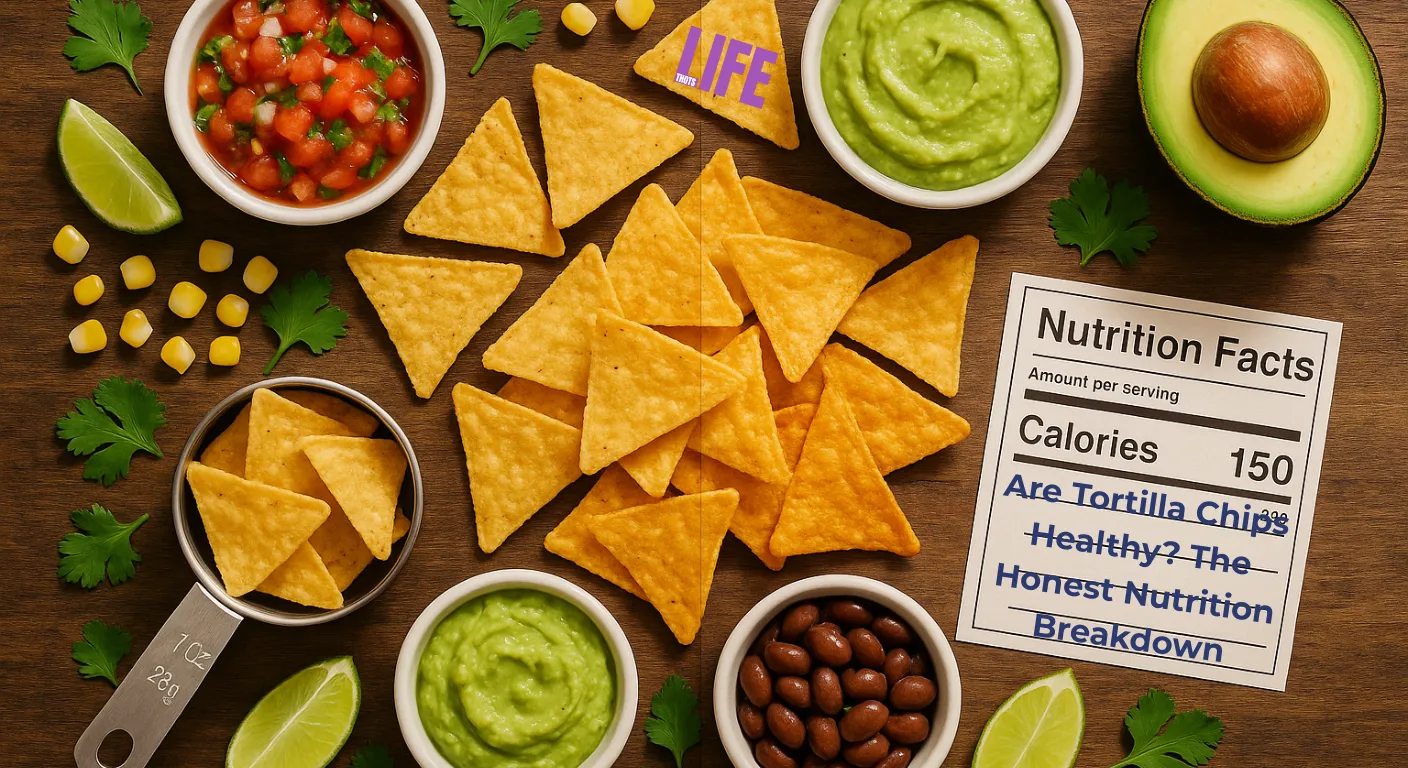Blog
Are Tortilla Chips Healthy? The Honest Nutrition Breakdown

Are Tortilla Chips Healthy?
You reach for a bag of tortilla chips, thinking, “Hey, corn — pretty harmless.” But then bing — the guilt creeps in. You start wondering, are-tortilla-chips-healthy, or are they a crunchy trap waiting to sabotage your day? Let’s unpack this honestly. I’ll walk you through what really goes into tortilla chips, break down the good and the bad, and help you figure out when they’re okay — and when they’re not.
What Are Tortilla Chips?
Tortilla chips start out as simple corn tortillas (or sometimes flour), cut into triangles and then fried or baked. From a nutrition standpoint, that final step — whether they’re fried or baked — makes a big difference. Frying adds more fat, calories, and sodium, which can quickly turn a light snack into a less healthy diet choice. Baked versions, on the other hand, tend to be lighter but can still pack in salt if you’re not paying attention.
The Good Side of Tortilla Chips
They’re not all bad. In fact, a few things about them deserve credit.
Simple Ingredients:
Most classic tortilla chips are made from corn, oil, and salt. No sugar, no weird preservatives just straightforward food.
Blue Corn Option:
Blue corn chips can carry slightly more antioxidants and protein. Not a miracle food, but better than nothing.
Portion Control Is Possible:
A single serving if you stick to it is fine. Chips are one of those rare snacks where you can literally count what you eat.
They’re Enjoyable:
And that matters. Healthy eating isn’t about punishment; it’s about balance. Enjoyment is part of sustainability.
The Downsides
Now, let’s be honest about where tortilla chips lose their charm.
Fried = More Fat and Calories
That frying step loads them up with oil. One ounce might not sound like much, but once you start snacking, the numbers climb quickly.
Low in Fiber
Fiber keeps you full and balances blood sugar. With barely 2 grams per serving, tortilla chips just don’t cut it.
Sodium Spike
A handful might seem harmless until you realize you’ve hit 400–500 mg of sodium. That’s a fifth of the daily limit for many adults.
The Dip Trap
Chips rarely travel alone. Salsa’s fine, guac’s fine until the queso or sour cream enters the chat. Then you’re in 500+ calorie territory.
Health Halo Illusion
“Baked,” “gluten-free,” or “whole grain” chips sound healthy, but that doesn’t erase the calorie density. It’s smart marketing, not nutrition magic.
Baked vs Fried vs Flavored
If you’re trying to make a smarter choice, here’s what you should know:
Fried Corn Chips – The standard kind. Crunchy, golden, and calorie-heavy.
Baked Chips – Lower in fat and calories, but sometimes less satisfying. Many brands add extra salt to “make up for it.”
Flavored Chips – BBQ, nacho cheese, chili-lime fun, but loaded with sodium and artificial flavoring.
Blue Corn Chips – Slightly more fiber, more antioxidants. The difference is small, but real.
So if you’re craving them, baked or blue corn versions are a slightly better bet just don’t kid yourself that they’re a salad.
How to Eat Tortilla Chips the Smart Way
The best part of this discussion: you don’t have to ditch them completely.
- Measure Your Portion: Around 10–15 chips is one serving. Pour them in a bowl, not your palm.
- Pair Them Smart: Salsa, pico de gallo, or a bean-based dip keep the calories reasonable.
- Watch the Frequency: Once or twice a week? Fine. Every night while scrolling Netflix? Not fine.
- Check the Ingredients: The shorter the list, the better. Corn, oil, saltdone.
- Hydrate Afterward: High sodium snacks make you thirsty for a reason. Drink water, not soda.
These small steps make a big difference over time.
Portion vs Habit
The Real Health Divider
A Handful With Lunch
Once in a while? Perfectly fine. This is mindful snacking. You enjoy the crunch, satisfy the craving, and move on with your day.
A Bag Every Evening
Daily habit? You’re slowly trading nutrition for convenience. The calories, sodium, and lack of nutrients add up fast.
The Core Truth
It’s not the chip that’s unhealthy—it’s the habit. The difference between healthy and unhealthy eating isn’t what you eat once, it’s what you do repeatedly.
The healthiest people aren’t the ones who never eat chips—they’re the ones who stop when the bowl’s empty.
Test Your Scenario
Enjoying chips during a weekly movie night is fine! It’s occasional, mindful, and part of a balanced lifestyle. Just watch your portion—measure it out instead of eating from the bag.
Daily chip snacking adds up quickly. You’re looking at 1,000+ extra calories and 1,500+ mg sodium per week. This routine slowly undermines your health goals. Try alternating with healthier options like veggies or air-popped popcorn.
Social gatherings are meant to be enjoyed! Having chips at a party once in a while won’t derail your health. It’s infrequent, social, and part of living a full life. Just balance it with healthier choices throughout the week.
A small measured portion (10-15 chips) alongside a balanced lunch is perfectly reasonable. You’re practicing portion control and not making chips the main event. This is sustainable, mindful eating at its best.
Final Take
Soare tortilla chips healthy?
They’re not villains, but they’re not saints either. They sit right in the middle: fine as a treat, poor as a routine. If you stick to small portions, choose baked or minimally salted types, and skip the greasy dips, you’re doing just fine. Enjoy the crunchbut don’t let it crunch your health goals.
